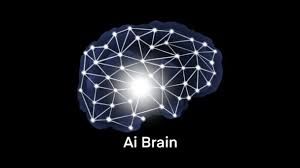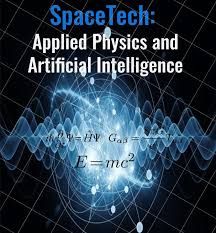Physics is the branch of science that deals with the structure of matter and how fundamental elements interact. Physics addresses the functioning of microscopically small digital elements comprising our vast physical universe.
Media psychology focuses on interpreting media and technology use and effects.
Artificial intelligence isn’t new, but its use is increasingly widespread. AI applications have skyrocketed in recent years. The construction of AI is based in three blended and synergistic networks: (1) psychology and the manifestation of human behavior, (2) the physical brain, as studied in neurophysiology, the branch of science that relates responses to cognition and behavior, and (3) digital computer networks of all types, which drive AI, including robotics. The three networks converge and operate on the premise that both synapses and nodes that are wired together fire together. This synergy is not widely understood, yet it is the basis of diverse forms of artificial intelligence.

The AI Brain
Source: Google Images, Public Domain
Essentials of Artificial Intelligence
AI applications attempt to support, extend, and/or mimic human experience, and address cultural needs and opportunities. Pictures, graphics, and sound combine in comprehensible, blended media communication. These communication factors include language, music, and the effects of the five senses—sight, smell, hearing, taste, and touch. Understanding the senses as applied in AI requires an understanding of (1) synesthesia, the experience of a stimulus expressed through multiple senses, (2) semiotics, including the meaning of symbols as in iconography, and (3) semantics, the meaning of words and language. Combined, these elements form the essential structure of artificial intelligence applications.
The role of artificial intelligence in media is explored by the American Psychological Association Society for Media Psychology and Technology, Division 46 of the APA. Media psychology is a relatively new and crucial field still undergoing development.. Graduate programs in media psychology are located in different departments in various universities—in the Department of Communications at Stanford University, in the School of Education at New York University, and in the School of Psychology at Fielding Graduate University.
Scholars and pundits are now forecasting a dramatic expansion and development of AI in every field and throughout society. It is clear in the literature that AI will progress apace in emulating human behavior and doing human tasks. Its development and application will continue to increase in diverse and unpredictable ways.

Applied Physics and AI
Source: Google Images, Public Domain
Use of AI is now growing in social media, commerce, public policy and politics, healthcare and medicine, and all areas of science, entertainment, the military, space, among others. New research opportunities abound in automation, smart decision-making, enhanced customer experiences, healthcare and medicine, big data research , information studies, public safety applications, and in managing all types of repetitive tasks.
Because of the disruptive effects of AI, there are also domestic and international calls for new public policy. In fact, AI is forecast to be one of the primary social and economic disrupters of the twenty-first century, so worldwide attention and cooperation is important. The European Union and U.S. Congress have committees and task forces working on guidelines. Recently, the Screen Actors Guild (SAG) went on strike, urging new provisions for revenues related to AI-related works.
Since AI’s impact is becoming pervasive, it is increasingly vital for the worldwide public to be aware of the negative side of AI. Projected effects include substantially increased unemployment in many fields, biased and discriminatory algorithms that disrupt commerce, intentional disinformation in social media reaching many people, increased domination by big tech companies, thereby creating monopolies, and image manipulation triggering many scams—all of which may cause cultural disruption. Simply stated, AI will transform work, reinvent business and healthcare, and alter living patterns in both positive and negative ways.
The following conclusions are increasingly clear:
- To fully grasp the nature, dimensions, and physics of AI, there is a need for much more research designed to increase understanding of the effects of AI, including, (1) human behavior, (2) the physical brain, and (3) AI technology.
- The drivers of technology, such as the members of DETCHE.com (Drivers of Educational Technology in California Higher Education), as an example of an organization whose members are using and developing AI, can contribute positively to progress.
- Federal agencies, such as the Department of Education, the National Science Foundation, the Department of Health and Human Services, and private foundations, need to increase funding for AI research.
- Artificial intelligence should be more widely acknowledged as a social, educational, commercial, and cultural game changer.
Artificial Intelligence Essential Reads
A wide understanding of the psychology, the physical brain, and digital-technology networks comprising AI is essential for all professionals who work in social and technical occupations. Understanding AI is a new social, educational, and economic imperative. The physics of AI are dramatic and affect everyone.
What should we do? As AI uses evolve and expand and disruptions occur, we face a challenging future. It is important to educate and support skilled leadership, increase workforce development, and support AI research. Our future depends on it.



